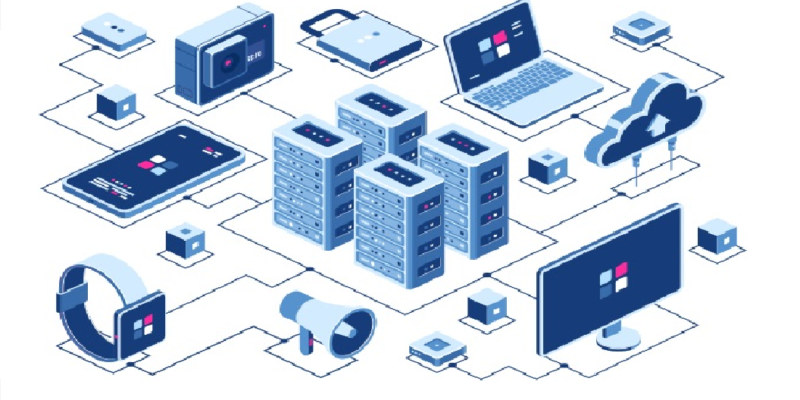Ethernet network cables have been around for more than 50 years. These cables have seen many developments and upgrades over the years. All of these changes made them better in one way or another. Although Wi-Fi has taken the world by storm, you cannot deny the importance of Ethernet cables.
Ethernet networking cabling is the backbone of the networking industry. These cables are everywhere, whether it’s local area networks or computers, routers, and gaming consoles. These cables create reliable and stable connections. You’ll get fast, uninterrupted frequency without any hiccup.
Ethernet cat6 plenum cables have many types and categories, e.g., cat6 plenum, cat6 solid copper, and so on. You need to have a basic understanding of how these cables work. What is the most reliable cable? In this article, we’ll try to explain almost everything about Ethernet cables.
The invention of Ethernet Network Cables
The credit for inventing Ethernet network cables goes to Xerox PARC researcher Bob Metcalfe. He invented high-speed networks and these cables in 1973. At that time, Bob didn’t know he would revolutionize the networking field.
Nowadays, you see these cables hanging from almost every computer and router. These cables created some of the world’s biggest data centers and networks. If you are considering Ethernet cables, you should consider these factors.
Data Transfer Rate
This is one of the most important factors regarding Ethernet cables. Since there are many categories of Ethernet cables, you need to know your network requirements. If you buy for commercial uses, you should choose higher categories like cat6 or cat7. If you are buying for domestic use or a small enterprise, cat5 or cat5e will work perfectly fine.
Data transfer rate refers to the amount of data a cables transfer in a second. Modern cables have remarkable data transfer rate. You’ll get up to 10Gbps frequency with these cables. If you are just buying them for gaming, that speed will be more than enough.
Length of Ethernet Cable
This is yet another factor to consider before buying an Ethernet cable. Different companies offer different lengths. You should remember that corners and turns require an extra cat6 bare copper cable. That is why you should take measurements with precaution. Some researchers indicate that any connection over 55 meters would require trial and error.
Deployment Location
If you ignore the location, the deployment can become a hassle. Most of the cables out there have fire retardant qualities. It means that they can put out the fire with thick smoke. They would also burn slowly in case a fire breaks out. There are three types of jackets; plenum, riser, and PVC.
Plenum cables are indoor Ethernet network cables. You can install them in the plenum spaces of your buildings. These places always have air presence, e.g., air conditioning ducts. This presence of air makes them dangerous. Plenum-rated cables would burn slowly.
Riser cables are ideal for riser spaces. These are vertical spaces of your building. You can install plenum cables in these spaces as well.
PVC or polyvinyl chloride is ideal for outdoor conditions. These cables can withstand extreme temperatures, weather conditions, and water flow.
These jacket types are included in the name of the cable along with category numbers like cat6 plenum.
Shielding & Internal Structure
There are two types of Ethernet network cabling regarding shielding; unshielded and shielded. If a cable has an extra layer of protection around the conductor, it is a shielded cable. If there isn’t any protection, this cable will fall under the category of unshielded cable.
An extra layer of insulation would protect the cable from crosstalk and electromagnetic interferences. Crosstalk is a phenomenon that happens when signals from nearby cables interfere with Ethernet cable. This can compromise the integrity of your data packets.
Regarding the internal structure, almost every cat6 cable 1000ft has the same these days. There are eight wires made of pure copper. These wires are twisted together to make four pairs. If the internal wiring has pure copper, then the cable name would indicate so like cat6 solid copper.
These pairs are tightly twisted. The reason for that is to neutralize the currents and to reduce crosstalk.
Categories of Ethernet Network Cables
The “cat” is the short form of category in a cable’s name. The main differences between these categories are the cable’s speed, shielding, and bandwidth. Although there are many categories, some have become obsolete. Cat5 or higher category cables are still in play.
Cat5 – this is a rather old category. You’ll get a 100Mbps data transfer rate with this cable. You can use this cable for your home networks.
Cat5e – this is an enhanced version of its predecessor. This cable can offer 1Gbps speed. This would be ideal for some gaming consoles or local area networks.
Cat6 – this newer category has a lot to offer. TIA/EIA verifies cat6 cables. This cable would offer a 10Gbps data transfer rate in ideal conditions. Furthermore, it has a better chance of fighting off crosstalk and EMI.
Cat6a – this is an augmented version of category six cables. Everything about this cable is pretty impressive. You’ll get up to 100Gbps data transfer rate with next to nothing crosstalk. Price can be an issue for some buyers. We hope this article will help you make an informed decision about Ethernet network cabling technology. It is always better to research before getting into a networking business.
Also Read: https://casinobolds.co.uk/















Comments